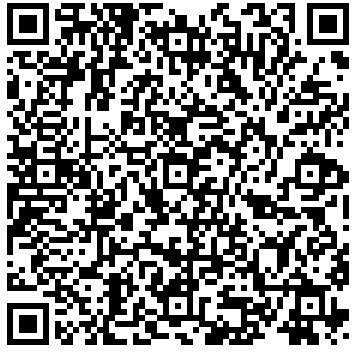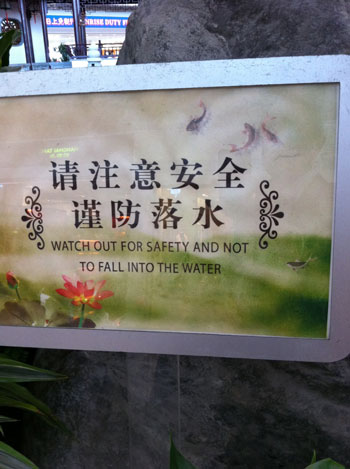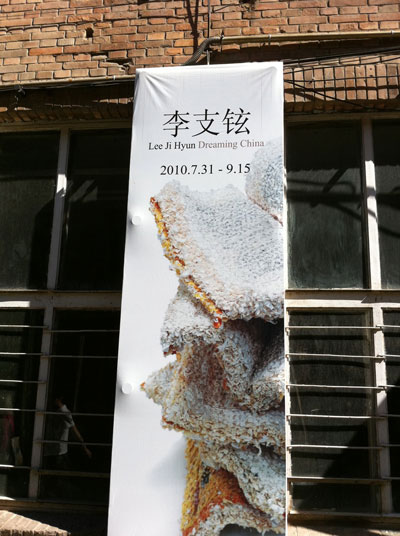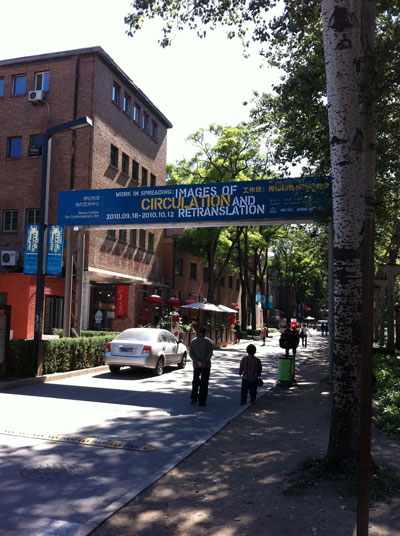From Cultures of Vision: Images, Media and the Imaginary by Ron Burnett, Published by Indiana University Press.
Generally, images are studied as if they are texts.
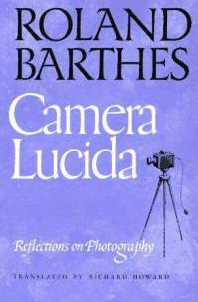
There are many problems with this conversion of media which use visuals and sound into text . One of the great difficulties which results is that we tend to approach the interpretation of media images as if they can in a literal sense be read. But, it is my contention and it was also Roland Barthes central concern later in his career, that we don’t read images as we might read words on a page. (See pages 120-126 of Cultures of Vision)
To speak of the image is often to speak of an object with a set of specific boundaries. It is to elevate image to the level of a category. Underlying this approach is the search for the visible. Frozen, the image becomes concrete. The visible can be named. What then happens to motion and to the passage of time? Are the configurations on the screen, the patterns of light and dark, the flowing presence and absence of people and objects, an image? Can this plurality and heterogeneity be reduced to the singular? Should it be? The concrete image can then become like a word or like a text.
John Unsworth deals with this problem from the perspective of computers and hypermedia and comes to the above questions from another angle in his article Networked Scholarship: The Effects of Advanced Technology on Research in the Humanities which is worth reading both for its historical and contemporary value.
What happens to textuality when the entire process is converted into a screen based experience?
How are words on a screen read?
The creation and then display of images presupposes a context which can be described as performative. We don’t generally think of images as vehicles of performance, but films are shown in theatres, paintings are displayed in museums as part of a show or an exhibition, plays are staged, even books are often accompanied by their authors. In a society devoted to and often dominated by spectacle it follows that images are almost always cast into a performative context. See the writing of Guy Debord.
The many links between performance and projection are at the centre of the concerns of Cultures of Vision. (Because it is an extreme enlargement, a projection poses many problems for interpretation, not the least of which is the content of what is shown on the screen. Designed as it is for spectacle, the large screen of a 35mm or 70mm film displays an excess of representations that cannot be compared to any other medium This excess produces an interplay between a multitude of levels, ranging from the spatial to the temporal, to the presence in an instant of many different representations. The screen is not the object upon which a projection is found, or upon which it displays itself, rather, the screen is a mediator - itself a representation - acting as a point of intersection between viewing and projection.)
If we don’t in a simple sense read images, what does it mean to say that we watch them?
How do we see images? How do we watch television, for example? These are not questions which can be answered by simple reference to the eyes of the seer or by simply examining that which has been seen. The act of engaging with images is as much a bodily function as it is a cultural one. “What we define as the visible (in the form of an image or the act of seeing) never fully contains within it the range of experiences we need to maintain a genuine feeling of control.” (Cultures of Vision, 127)
Sometimes, the very terminology used contributes to the confusion. What are the differences between looking and watching? Do we view images in the same way and with the same intellectual tools as just looking out a window, for example? The act of looking carries with it the desire to possess what we have looked at. “The attempt at mastery is always confronted by a sliding away, a movement from the seen to the unseen and from recognition to confusion.” (Cultures of Vision, 127)
One way of rethinking the relationship we have with images is to think of dialogue(s) —perhaps what we are engaged in is more related to the activities of speaking than just viewing. This would suggest that the rather ephemeral nature of image-based experiences may be based on an interactive process which cannot be divided into image/viewer. “Possession reveals itself to be ephemeral, and the only place within which some order can be brought into this set of experiences is through argumentation and discussion. The dialogic nature of this process can be internal or external. It can take the form of a vague series of thoughts (an imagining of the seen) or efforts at articulation between two individuals or among many.” (Cultures of Vision, 128)
One of the mistakes which we may be making is to confuse the frame of the screen, or the picture with the framing of vision. The notion of the window as a boundary has been a sustained part of all work on images from the earliest days of painting onwards. The limits of the frame are somehow made equivalent to the limits of perception and understanding. (See pages 4-6 in Cultures of Vision.)
The frame is only one of many possible “places” where various forms of dialogue can take place. And even the spatial metaphor which I am using can act to constrain the movements of meaning which characterize the entire process.
The Eye in the Photograph
There is an empty space between Georges Bataille’s Story of the Eye [1](which invests every look with fantasy and converts every fantasy into a series of images[2]) and the technological determinism of László Moholy-Nagy (a member of the Russian constructivist movement of the 1920’s): “Photography, then, imparts a heightened, or [in so far as our eyes are concerned] increased, power of sight in terms of time and space. A plain, matter-of-fact enumeration of the specific photographic elements — purely technical, not artistic, elements — will be enough to enable us to divine the power latent in them, and prognosticate to what they lead.” [3]
For Moholy-Nagy the activity of taking photographs and looking at them, encourages the human eye to evolve into a new state, with radically new goals. Moholy-Nagy proposes close parallels between the technological language of photography and such terms as, abstract seeing, exact seeing, rapid seeing, slow seeing, intensified seeing, penetrative seeing, simultaneous seeing and distorted seeing. To him these exemplify new configurations of human sight generated out of the relationship of technology and human activity. The camera so to speak is woven into the eye and it is Moholy-Nagy’s contention that the eye must as a result, change. A direct line is established between picture-taking, the image, vision (as response) and thought. This is in part why Moholy-Nagy privileges the scientific importance of photography and trivializes its artistic role. In contrast to Bataille, for whom the word and the image are located in the imaginary and for whom the imaginary is, so to speak, located in the eye, Moholy-Nagy seeks truth as the epistemological grounding for what is acceptable and what isn’t acceptable as image. “…the real photographer has a great social responsibility. He has to work with these given technical means which cannot be accomplished by any other method. This work is the exact reproduction of everyday facts, without distortion or adulteration. This means that he must work for sharpness and accuracy. The standard of value in photography must be measured, not merely by photographic esthetics, but the human-social intensity of the optical representation.” (Moholy-Nagy 56)
This quote must be understood as one of the key assumptions in the description of photography as a medium, the melding of scientific and aesthetic concerns around ideas of representation, the attempted fusion of technology and the eye. Moholy-Nagy anticipated the pivotal role of photography in generating scopic regimes which would validate cultural presumptions of truth. He could not have anticipated the way photography would evolve as a distinctive marker for temporal shifts, as an integral and strategic respondant and creator of historical discourses. Yet, he would have been aware that he was in fact creating a context for the photographic image which locates its truth value in the power of its reproductive aesthetic and its instrumental role. And he would have known that he was following the Cartesian imperative to rid the world of its optical illusions, to find truth in the visible and to make the visible truthful. For Moholy-Nagy, the mental, the physical and the real gain their strength from the image. The image becomes that schematic point of reference which allows technology to transcend the inconsistencies and weaknesses of the human eye. His was as much a technical as a pedagogical imperative. The aim was to use the image to teach some basic truths about the human condition, to strip away those categories of seeing which the “eye” of everyday life imposes on human subjectivity. In positing such a direct link between knowing and seeing, Moholy-Nagy makes use of a model of mind which enframes knowledge as visual and which constructs the mind as a mirror of the world around it. That model continues to resonate with some power in present day discussions of images, particularly with respect to the role of images in the media. [4]
The reasons why Moholy-Nagy’s approach would become culturally dominant will become clearer in a moment. Just as there is a need to dialogue across the divide which seprates Crary from Edelman, so there is a need to examine the potential links and conflicts between Moholy-Nagy, Georges Bataille and Gerald Edelman. Bataille was as obsessed with images and vision as Moholy-Nagy and as concerned with the cultural and social role of new technologies as his contemporaries in the art and architecture movements of the 1920’s and 1930’s. In a statement not dissimilar to the claims made by Edelman in the book from which I quoted, Bataille says the following: “What you are stems from the activity which links the innumerable elements which constitute you to the intense communication of these elements among themselves. These are contagions of energy, of movement, of warmth, or transfers of elements, which constitute inevitably the life of your organized being.” [5]
To Bataille consciousness is governed by autonomy and indeterminacy. Edelman, coming from a neurobiological perspective says the following: “…for systems that categorize in the manner that brains do, there is macroscopic indeterminacy.” (Edelman 169) The rather vulgar materialism of Moholy-Nagy pales in the light of these debates. To Edelman all of the various categories which we use to explain consciousness, memory and vision are not in any way fixed. The all too easy relations of causality and effect built into notions of technological determinism fall by the wayside. There are levels of unpredictability built into all of this which as Edelman suggests are ‘never free of affect,’ (Edelman 170) and in much the same way, Bataille suggests: “Life is never situated at a particular point: it passes from one point to another (or from multiple points to other points), like a current or like a sort of streaming of electricity. Thus, there where you would like to grasp your timeless substance, you encounter only a slipping, only the poorly coordinated play of your perishable elements.” (Bataille 94)
Knowledge, and our awareness of what we know, generally exceed the parameters of the models which we put in place to explain relations of understanding and perception. Edelman balances biological and scientific arguments around consciousness with an equal if not greater concern for subjectivity, for interiority. He avoids the mechanistic approach of Moholy-Nagy by emphasizing the role of time, memory and history. (Edelman 168) It is this contrast between mechanistic and non-mechanistic strategies of explanation with regard to consciousness which is marginalized by Moholy-Nagy. But this in itself is part of his faith in technology, in the potential of machines to contribute to human progress. Increasingly, as the camera eye has come to stand for, if not stand in, for the human eye, the perspective of Moholy-Nagy has taken root as one of the fundamental assumptions of industrially advanced societies. [6]
Death in Bosnia
In a recent photograph from the New York Times we see a Bosnian soldier facing the camera and begging for his life. He is a young man. He has curly hair and a smooth face. His arms are outstretched. Behind him stands a Serbian soldier, rifle cocked and ready. As the caption suggests this man’s pleas were answered with his own death. He is staring at the camera as if it will provide him with refuge, as if the photographer will somehow intervene. The photograph cannot anticipate history but the caption can. The prisoner pushes against the camera — he is pleading for help. Yet, without the caption, his “story” and the interpretations which we could make of it, would be entirely circumstantial. In this case, the written word acts as an arbiter for the event and tries to intervene in our interpretation. But even as I say this, the photograph slips away. This anonymous man’s torment is as silent as the paper it was printed on. It would take an imaginative projection on my part to overcome the gaps created by his death as written and as image.
It is this tension between image and word and the spaces between language and the photograph which Moholy-Nagy wanted to overcome, but which remains a continual question mark with respect to all images. Nevertheless, I can, by an act of imagination partially place myself in that man’s position. It is this which allows me to at least think that I can feel his fear and pain. My argument remains ambiguous because I have simply taken the image and used it to my own advantage. Whatever applications I want to make of the knowledge which I have about the Bosnian war can be invoked in an arbitrary fashion. This is a source of tension. It drives the image into a sphere quite different from the original moment when it was taken. What then is the value of my appropriation of the image? In Moholy-Nagy’s terms, the eye, which he saw as an optical instrument and the technology of photography which he championed along with other formalists of the early 1920’s, made the photographic print the result of a superior process of vision. The frailties and ambiguities which I have just described can be transcended through the proper use of the technology, he suggested (a pedagogical role which was as important to the formalists as their experimentation with aesthetics) — the contradictions of subjectivity can be overcome.[7]
In a photograph a person’s history is buried as if under a layer of snow.”[8] The anti-positivist stance of Siegfried Kracauer which is commented upon by Miriam Hansen[9] stands in stark contrast to the ideas of Moholy-Nagy. Kracauer distinguishes between the photograph of a person and the memory-image. The latter is what is left when the photograph is viewed outside of the time when it was taken. This distinction is a crucial one. It temporalizes the photograph and in so doing heightens the role of discourse, what is said and what isn’t said about images. No photograph escapes the contradictions and potential excitement of temporal dislocation. There are so many movements in space and time, so many moments within which history must be rewritten, that the conceit of truth must be understood not as an ontological basis for interpretation, but as a site where memory is reinvigorated, even when memories slip from fact into fiction and back. The pleasures of seeing in this instance are invested with desire, to make the memory real, to generate truth, to manufacture a narrative. The truth becomes a metaphor just as quickly as the image disguises its sudden transformative power. The snow melts and there is a dissolution of memory although the photograph remains suggestively encouraging — as if no historical moment will ever again escape its simultaneous role as event and image, memory and potential arena for debate.
Vivian Sobchack captures these ambiguities in the following quote: “In the still photograph, time and space are abstractions. Although the image has a presence, it neither partakes of nor describes the present. Indeed, the photograph’s fascination is that it is a figure of transcendental time made available against the ground of a lived and finite temporality. Although included in our experience of the present, the photograph transcends both our immediate present and our lived experience of temporality because it exists for us as never engaged in the activity of becoming .” [10] At the same time, Sobchack makes the claim that the photographic image is in itself meaningless. “…it does not act within itself to choose its meaning, to diacritically mark it off.” (Sobchack 60) Clearly, no object can ever engage in marking off its own boundaries with respect to meaning and communication. Sobchack moves from this “emptyness” to the conclusion that “…like a transcendental consciousness, the photograph as a transcendental structure posits the abstraction of a moment but has no momentum ….” (Sobchack, 60) Yet, to begin with, the photograph is never like consciousness. There is no basis of possible comparison here. Temporal frameworks cannot transcend subjectivity and subjectivity is never, so to speak, within the photograph. Although her work is far more sophisticated at a theoretical and historical level than that of Moholy-Nagy, Sobchack nevertheless falls prey to some of the same problems. The many levels of mediation which go into the production, creation and interpretation of photographs suggest a great deal about how we categorize and make judgements about sight. But images are not the markers for this, not the place within which this process drives towards a result. The tensions here don’t resolve themselves into some sort of ontological sphere which produces either a radically different subjectivity or a dramatic shift in perceptual ability. The gaps are enormous and they are characterized by an attribution of power to the image process which cannot be dismissed, since at a cultural level this is what continues to legitimize the role of images as tools of communication.
It is also important to note that the contrasting positions of Kracauer and Moholy-Nagy are located in Kracauer’s desire to challenge the modernist tendency to search out and then catalogue the supposedly inherent characteristics of any medium. This debate, which is crucial to practitioners, situates meaning in the properties of the technology being used and is in part another aspect of the drive towards an ontological approach. I will comment on this point in greater detail during my discussion of film and television.
Let me suggest that photographic images neither illustrate thought, nor are thoughts illustrated by the pictorial. Photographic images are silent, blind, unseeing. They don’t listen to us nor do they change when viewed. They are not the source of a magical emanation from which the seeing eye draws inspiration. They rarely display the hand of the photographer who has created them and for the most part leave no traces of the chemistry which has produced them. This is not simply a matter of arbitrariness, of meanings lost and then gained, of part-whole relations which flounder in confusion. Photographs cannot rob the subjects they portray, since as I will try and discuss below, photographs never have subjects, men, women and children “imprinted” upon them. What is in play here is the very language which is used to describe and explain the “sight” of an image, the categories, words and labels which have been applied to the miniature worlds we peer into, anthropomorphize, recreate.
These tiny strips of paper contain within them the history and residual consequences of post-Renaissance cultural activity, a movement from notions of artifice in painting, to assumptions of transparency in photography (the machine produces what we see and not the cameraperson). The photographic image is not the Platonic world of illusions, that place and space within which the real is somehow transformed into a shadow or worse, the shadow becomes the real. Like a theatrical stage, the photographic image foregrounds the mise-en-scène of a hypothetical world, but unlike the stage, everything is reduced, until what is left are pieces of paper, flattened, unmoving, which subsist on our yells and screams, on our invocations to the image to speak and on our desire to be heard and to be seen. The “enjeu” here is desire, which can remain embedded and unexpressed, but for which no fantasy is the final outlet and for which no image or discourse provides a simple or complete answer. The hypothetical world made possible by images is not a place within which the viewer controls what they see. Rather, and as has become clearer with the rapid growth of digital images, the question is, what do we mean by viewer and why the focus on sight? There is a strong argument for disengaging the term viewer from its conventional and cultural roots, at least temporarily, in order to explore the complexity of hypotheses about the experience of images. [11]
There are moments within which fantasies operate as if the very notion of sight seems redundant, as if our preconceptions that to see means to understand, will dissolve in the face of the theories needed to explain why the obvious never seems so simple. We end up blaming the object or the image for what we have done to it (projection) and then feel guilt for importing feelings or sensations or thoughts which we cannot control (as if the outside and the inside have become one). This suggests that the activities of seeing are never as static as the image itself proposes. In fact, the opposite is true. The ephemeral aspects of seeing are themselves built into the image. The many different layers operative here are as personal as they are socially and culturally constituted. [12]
Out of Focus: David Koresh
Waco, Texas — Spring, 1993: The image of God is only as strong as “his word.” Reading from the bible, David Koresh prepares his followers for death with pictures of a world gone mad. (The images were videotaped by an Australian Television Network.) The only place of order is Koresh’s universe, into which believers must plunge, and from which there is no exit. The mind here fits into the geography of a Faustian suburbia in which all pictures become literal, where the word, the thought and the image turn into a blazing inferno of oneness. The mass death in Waco comes at a time when what we say and what we believe can only be united and dispersed through the various uses which we make of images. But this is not simulation, rather, these are images quickly punctured, flimsy, fragile, like the wooden buildings Koresh burned in a final act of defiance against the police and the world. Koresh’s words may have worked to ensure his vision. Yet, it was clear as we ‘watched’ image after image of Koresh taunting his interviewers that he was performing the role of cult figure. He enjoyed his notoriety. He built on the foundations his fame created for him. His words were those of an image which made him all the more dangerous since he saw no distinction between word and image, between hallucination and truth. When he spoke, it was as if he was in a trance. This made him even more powerful to his followers who attributed the trance to god, who saw Koresh as the conduit for a deity’s words. They energized him to believe that the words were divine and he in turn took their worship as a sign that god had in fact spoken to him. How can this reciprocity be broken? It is, as with all images, built on a flimsy foundation, but that only strengthened Koresh, encouraging him to become larger than life, an enlargement.
As the fire spread, the first images on television were telephoto pictures of buildings in flames. The distance and the heat produced a wavy, dance-like effect — the dissolution and recreation of the image — a loss of substance, as if the crematorium were the figment of somebody’s bizarre imagination. More than anything else, the idea, let alone the reality of mass suicide could not be brought into the status of a “real” image. Rather, as the telephoto suggests, the event makes distance essential, because these “sights” are not for human eyes. They represent ideas and events which can’t be viewed — the cult as a laboratory for a culture which has lost its ability to “see.” The telling irony here is the almost medieval belief in a world controlled not by rationality and human choice, but by deities. Any claim can be made for that which cannot be seen and the unseen can act as a dark shadow harrassing those who disbelieve.
The photographs reproduced in newspapers the following day were also “out of focus.” The justification was the heat of the inferno and the fears of police that the fire might injure journalists who wanted to get closer. At the same time, the photographs were surrounded by articles puzzled at the decision of the cultists to die. Death cannot be shown though it is not without some irony that NBC put on an instant fictional retelling of the history of Waco a few months later — evidence of the need to reconstruct, to tell a story of mass death in the present tense. This effort at fictionalization was not an accidental recuperation. It can be thought of as cultural analysis. It was an effort to move from the event to an interpretation, to find subjectivity where none had been apparent — a ritual way of taking control of events which seemed to be unintelligible. It was also a strategic response to the darkness of Waco, to its invisibility.
This was an event which seemed to be so close that it required the dream, the daydream, the painting or the screen. More than anything, NBC transformed Waco from an image into a symbolic construct and in the process validated the need for the poetic, for the fictional. Waco finally lost its specificity but its historical importance became clearer. What would happen if the invocations by religious extremists were the expression of precisely the mythic underpinnings of civilized America? What are the social implications of the claim to be god? Or even to be the messenger of god? It is easy to disavow, to dismiss, to dispel the role of the religious right in American life. It is much more difficult to find the images which will reveal its weaknesses, its dependence on metaphor, its desire to save people in the same way that David Koresh did. So, although the firestorm was more about the death of innocent children than about the parents who fathered and mothered them, it was also the clearest manifestation of the pitfalls which can occur when symbolic hypotheses move from the realm of theory to practice.
Rodney King: Community and Communication
Rodney King: The fury at King’s first trial — at the acquittal of four officers whose actions had been captured on video was based on a presumption of guilt even before the trial had taken place. Putting aside, for the moment, any consideration of truth, why was the video image so effective? This question was certainly not asked by the vast majority of viewers who rioted or by the media in general. The crucial point is not whether the event happened but how to interpret it. Arguments against cause and effect seem to fall apart here, as if earlier and widely discredited theories of the media as a hypodermic needle could indeed be justified and validated by the intensity of the rage at the verdict. But that, crucially, is the paradox. The verdict, although steeped in the contradictions created by the presence of the video, relocated the image in a process far more complex than the television transmission of the beating — the crucial differences between information and communication.
Communication is social and community based. There is of course a symbiotic relationship between communication and information. But there is one crucial difference. Information can exist, so to speak, without being placed into the public sphere. In other words, the books lined up in the stacks of a library retain their status as information until they are used. When a book is taken out of the library a communicative space is opened up, but even this remains hypothetical and contingent until the book is read, glanced at, talked about, etc.. Of course the book was produced in the context of a social and public space and its purpose is communicative. But I am emphasing the importance here of use — the pragmatics of the movement from written word to public debate.
The Rodney King video was information until it was broadcast. Once it hit the airwaves the transformation was immediate. As with most images it was used in any number of different ways. Information can he highly codified but communication cannot. [13] This also extends into the interpretive environment which the broadcasting of images encourages. There are so many possible ways of interpreting media events that it is difficult to create and sustain consensus.
A “viewing” of the video images establishes the environment and the possible premises for an act of communication, but it is not the translation of the codifications which were built into the shooting of the video or its subsequent broadcast (within the context of news shows). What we are dealing with are a variety of interpretations within the framework of a subjective context that is both community based and individual. Consequently, the argument is not whether Rodney King was beaten (information) but to what degree and with how much intensity the communication of the event would be appropriated (for many different reasons) by the communities and individuals who watched. [14]
The level of appropriation will inevitably vary from community to community and from individual to individual. The degree of variance will depend on sometimes predictable and often times unpredictable circumstances. The interpretive strategy chosen to deal with these contradictions will contribute to the formation of community and to its potential dissolution. At the same it is possible for a highly localized communicative framework to be created which is not necessarily dependent on the original historical processes at work in the event or in the creation of the images.
This movement beyond a “source” — this dispersion, makes it very difficult to account for intentional relationships — to specify cause when effect seems so apparent and visible. The term which helps to explain this is diffusion. Diffusion spreads the subjects of communication around an ever widening public sphere which actively legitimizes and deligitimizes itself as a variety of hypotheses and actions are tested in the community. Some fail and some succeed. Clearly, as the buildings burned in Los Angeles we were witnessing a rage which unified, albeit briefly, a community whose experience of oppression left it with few alternatives. The word riot tends to suggest homogeneity of purpose, combined with loss of rationality. But, another way of “seeing“ this would be to understand the violence as a concrete expression of Rodney King’s dilemma. He knew that he had been beaten and his body displayed the results. He watched the video as further evidence of police brutality on the natural assumption that information and experience combine into communication and truth, as well as forming a base for understanding why events unfold as they do. Although this rather formulaic approach has all of the appearance of logic to it, the paradox is that truth communicated through the image doesn’t gain legitimacy unless there is some consensus to back it up. What was so frustrating for the black community in L.A. was the sense that the truth had been validated through the video and that this consensus was being denied its legitimacy. The gaps here are enormous and deeply scarring. The question is was the image a valid starting point from the outset?
This may not explain why the Rodney King verdict went against commonsense logic (and reflected the racist agenda of the defense, as well as the confusion and racism of the jury) but it suggests that information can always be manipulated to suit goals and assumptions which have little to do with the image. If the image is taken as the only arbiter of the process, chances are that we will continue to confuse information and communication as if they transparently reflect the same level of organization and structure, the same intent and meaning.
Debates of a similar kind arose when photography was first used in trials as evidence of a crime. Many questions were raised not the least of which was possible tampering with the image. The point here is that the image can be challenged in a courtroom to the same degree and using similar premises to the challenge thrown out at a witness. Similar levels of subjectivity can be suggested. And as the transcripts of the first King trial reveal, the credibility of the image can be attacked. Essentially, the defense toyed with questions surrounding information and communication, by introducing so many levels of interpretation to the image that the jury was dissuaded from taking the beating at face value. Yet, this is precisely the paradox and the motor force of communicative processes through images. They can be taken at face value or not. In the final analysis, a jury could not have settled this question and consequently, it was left up to the community to prevail — a necessary, yet brutal form of popular justice.[15]
[1]Georges Bataille, The Story of the Eye (London: Penguin, 1982).
[2]Bataille’s comments on pages 69-70 of The Story of the Eye as a of postscript to the narrative are suggestive. He sees two photographs and is able to recall an important moment in his life. This is followed by further detail on his past including the fact that his father was blind when Georges was conceived. The photographs recede into the background to be replaced by more and more complex levels of fantasy. Jean-Luc Nancy has commented on the meaning of Bataille to him. It is worth quoting from since it comes very close to my own feelings about the communication of meaning through images. “…Bataille immediately communicates to me that pain and that pleasure which result from the impossibility of communicating anything at all without touching the limit where all meaning spills out of itself like a simple ink stain on a word, on the word meaning. This spilling and this ink are the ruin of theories of communication, conventional chatter which promotes reasonable exchange and does nothing but obscure violence, treachery, lies, while leaving the power of unreason no chance of being measured.” Jean-Luc Nancy “Exscription,” Yale French Review, ed. Allan Stoekl, No. 78, 1990, p. 47.
[3]Richard Kostelanetz, ed., Moholy-Nagy (New York: Praeger, 1970) 52.
[4]Joel Snyder dissects the ideology which underpins this conception of the image in “Picturing Vision,” The Language of Images ed. W.J.T. Mitchell (Chicago: University of Chicago Press, 1980) 219-246.
[5]Georges Bataille, Inner Experience, (Albany: State University of New York Press, 1988), 94.
[6]See Merritt Roe Smith, “Technological Determinism in American Culture,” Does Technology Drive History? The Dilemma of Technological Determinism, eds. Merritt Roe Smith and Leo Marx (Cambridge, Mass: MIT Press, 1994) 1-36 as well as Leo Marx, “The Idea of Technology and Postmodern Pessimism,” 237-258. The latter essay describes of the rise and fall of technological utopianism and the shift from an optimistic to a pessimistic view, as a further, but more complex form, of technological determinism.
[7]Abigail Solomon-Godeau comments on these issues in her article, “The Armed Vision Disarmed: Radical Formalism from Weapon to Style,” in The Contest of Meaning ed. Richard Bolton (Cambridge, Mass: MIT Press, 1992) pp. 86-110.
[8]Siegfried Kracauer, “Photography,” trans. Thomas Y. Levin, Critical Inquiry 19-3 (1993): 426.
[9]Miriam Hansen, “With Skin and Hair: Kracauer’s Theory of Film, Marseille 1940,” Critical Inquiry 19-3 (1993): 437-469.
[10]Vivian Sobchack, The Address of the Eye: A Phenomenology of Film Experience (Princeton, New Jersey: Princeton University Press, 1992), 59.
[11]Kaja Silverman uses Jonathan Crary, Jacques Lacan and a film by Haroun Farocki (Bilder der Welt und Inschrift des Krieges ) to examine some of the problems which I am referring to. Silverman offers a particularly creative analysis of Lacan’s distinction between the gaze and the eye in order to reexamine the role of visual apparatuses such as the camera in theories of representation. Kaja Silverman, “What is a Camera? or: History in the Field of Vision,” Discourse 15.3 (1993): 3-56.
[12]Martin Jay discusses these issues in an early part of his new book. Martin Jay, Downcast Eyes: The Denigration of Vision in Twentieth Century French Thought (Berkeley: University of California Press, 1993) 23-25.
[13]These issues are debated in great detail in Umberto Eco, Interpretation and Overinterpretation (Cambridge: Cambridge University Press, 1992).
[14]A special issue of the magazine High Performance elicited the responses of over one hundred artists, writers, teachers, children, parents and gangmembers to the Rodney King verdict and the subsequent uprising in Los Angeles. This is precisely one of the ways in which consensus is built and through which communities develop a more global understanding role and potential. High Performance, Special Issue, “The Verdict and the Violence,” 1992.
[15]For further detail on the Rodney King debate see, Judith Butler, “Endangered/Endangering: Schematic Racism and White Paranoia,” Reading Rodney King/Reading Urban Uprising ed. Robert Gooding-Williams (New York: Routledge, 1993) 15-22.
 Saturday, November 6, 2010 at 8:33PM
Saturday, November 6, 2010 at 8:33PM 

